Paul Gartside’s design #221 for a 17′ outboard runabout came about in 2016 when he had an inquiry from a resident of Victoria, British Columbia. The brief was for a 1950s/1960s-style boat with a pair of seats behind a protective windscreen, with room for gear or extra passengers aft, and to use in the Gulf Islands, an archipelago in the inland sea between Vancouver Island and the British Columbia mainland. Paul says that this style of boat “has been standard since the first boom in outboard power in the 1920s, perhaps even earlier, and it’s still hard to beat. It’s fun, comfortable, and sociable—a lot like driving a car.” Knowing that the Gulf Islands area has “some of the most benign boating conditions salt water has to offer” but with “strong tides and wind chops from time to time,” Paul gave the boat’s planing surface a few degrees of deadrise to counter pounding. “In a small boat with the crew’s center of gravity at times high, we can’t give it much, but every little bit helps at speed,” he said. The original brief was for glued-plywood clinker (lapstrake) construction, but Paul also advocates clenched clinker, cold-molding or strip-planking, the latter being, he thinks, “probably the most practical option for most home builders.”When Tim Odling enrolled in the 40-week Boat Building, Maintenance and Support course at the Boat Building Academy at Lyme Regis, UK, in October 2021, he would have liked to have built a sailing boat with a fixed keel, but the academy’s workshop was unable to accommodate such a boat. So, he decided to build Paul Gartside’s #221 with strip-planked construction, not least because clenched clinker, plywood/cold-molding, and glued-carvel construction were being used for the other three boats the students were building, and it is BBA policy to expose the students to a variety of methods. The windshield included in the drawings hadn’t been built in time for the launching. The drawings also show a folding dodger that offers occupants of the two forward seats additional protection from spray and rain.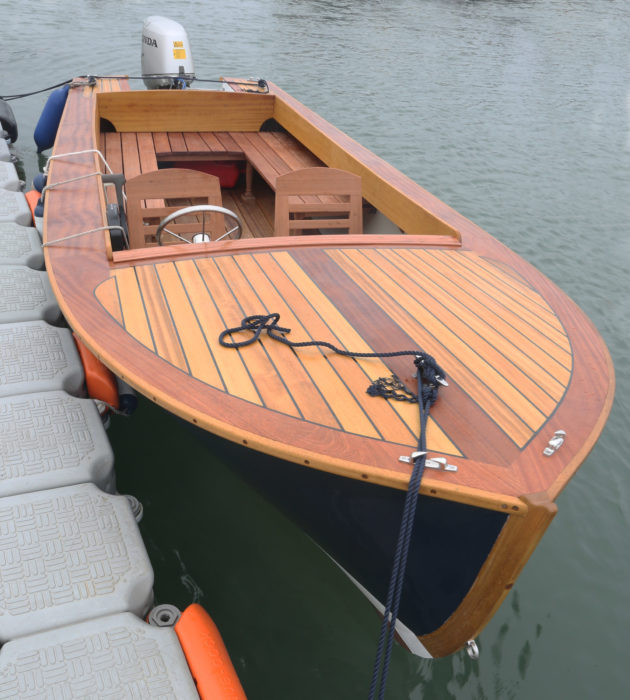 All photos by Nigel Sharp
All photos by Nigel Sharp
Join The Conversation
We welcome your comments about this article. To include a photo with your remarks, click Choose File below the Comment box.


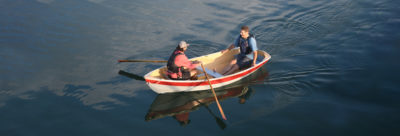

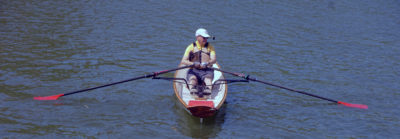




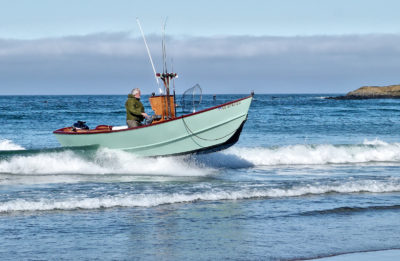
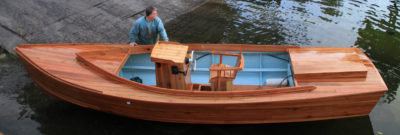

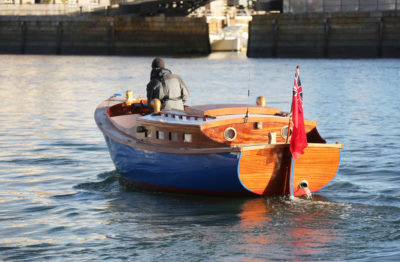
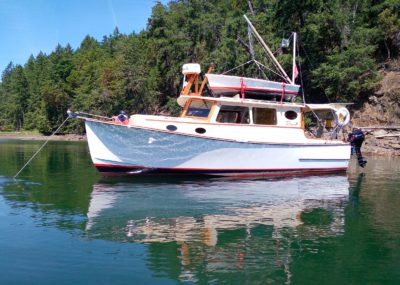
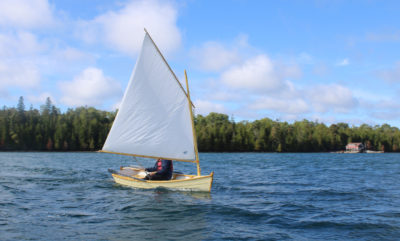

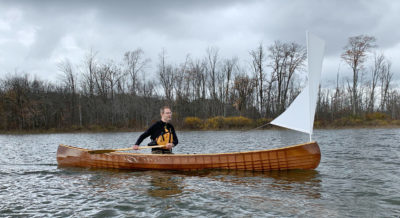
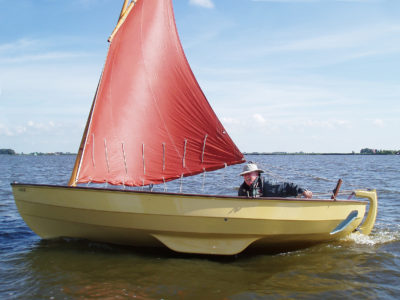
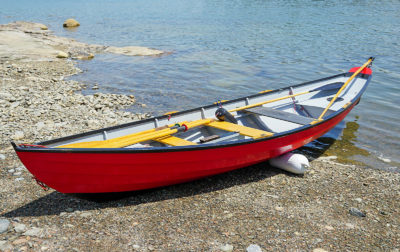
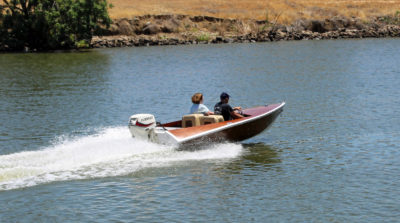
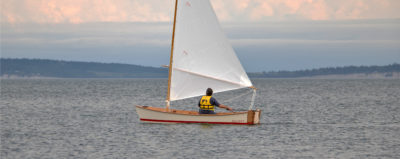
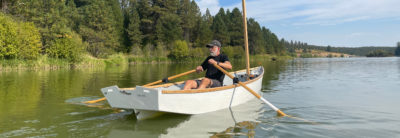
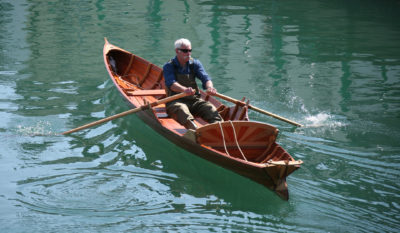
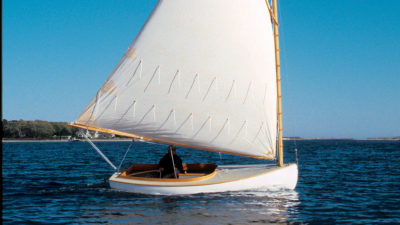
Why do so many powerboaters think that there are only two speeds, stopped and knuckles-to-the-firewall? With what we know of climate change and the effects of burning fossil fuels, those who don’t want to row or sail need to come up with a new ethic.
Stills of motor boats on a plane tend to look more speedy than they actually are. Those shots were probably less than 20 mph. As for climate change, a Tohatsu 30 on a 17′ boat is hardly unethical in the grand spectrum of oil consumption. Given the alternative to the wood-boat aficionados are many recreational boats with twin 250’s or more. I think the constituents of this magazine are, in all forms, low consumption.
Well said, John.
Another piece of functional sculpture from the talented Mr. Gartside. Beautiful! He may get me to build another boat after all.
I’m the person in Victoria, BC, who asked Paul for the design, and launched my glued-lapstrake plywood version in November 2020. It was fun to build from the excellent plans and is a wonderful boat for its intended purpose. This strip-plank version looks lovely.
Mine also rode bow-high, which I addressed by adding small trim tabs that can be adjusted manually for different loads. The 40hp motor I selected gets her up on plane but I may upgrade to 50hp (same weight as the 40hp) to enable cruising at lower rpm.
Thank you for chiming in with your experience and posting those beautiful pictures of your boat. As a Victoria native myself I’ll keep an eye out for it on the water.
This boat is similar in size to one I built several years ago, and I encountered the same design concerns. I extended the hull at the stern to recess the outboard into the boat. That does three things: it supports the motor better, it almost eliminates bow rise during acceleration to plane, and it visually hides that big motor hanging off the back. Here in Colorado, all our boating is done at 6,000′ to 10,000′ altitude (after the ice melts); so, I use a 75hp engine, but it is not developing its full power.
I also placed the fuel tank under the front seat for better weight distribution. I kept windshield height low. At speed, you are looking over the windshield for maximum view, but the airstream is still deflected over your head, not in your face. The lower windshield also allows a lower height for the rig when towing on the highway.
The feature I wish I had incorporated is the small keel Paul Gartside included. At speed, everything is fine, but when maneuvering at low speed around the launch ramp, any wind can push the hull off course.
beautiful runabout !!! … Would like to see a 20-23 foot version for cruising more folks !!!